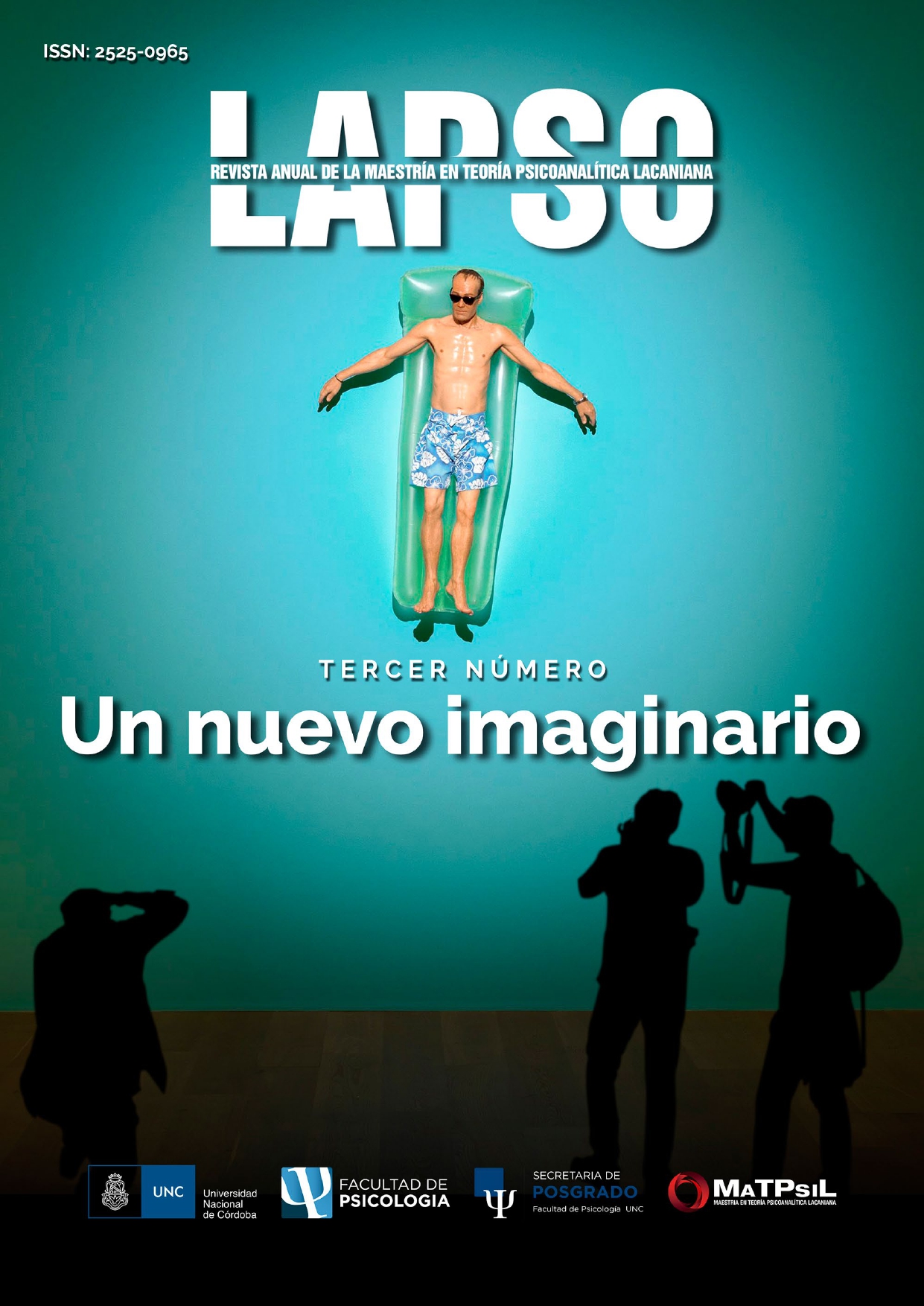A new imaginary
Abstract
As stated in the first editorial, the journal is committed to research, which involves being “open to what is new, not without foundation” (Gómez, 2016), as it is the way we have of “escaping from what we already know, which can only present erudition struggles” (Laurent, 2010, p. 15). In this sense, “a new imaginary” is the notion which serves as the starting point for the questions weaving the weft of LAPSO’s third issue. Readers will find that the different texts adopt the form of an inquiry about that notion articulated with the different facets of the syntagma.Downloads
References
Brousse, H. (2012). Cuando la imagen se hace destino. Disponible en:
http://nel-medellin.org/brousse-marie-helene-cuando-la-imagen-se-hace-destino/
Lacan, J. (1975-1976 [2006]). “El sinthome” en El Seminario. Libro 23. Buenos Aires: Paidós.
Lacan, J. (1973). “Los no incautos yerran” en El Seminario. Libro 21. Inédito.
Lacan, J. (1964 [2007]). “Los cuatro conceptos fundamentales del psicoanálisis” en El Seminario. Libro 11. Buenos Aires:
Paidós.
Laurent, E. (2010). “¿Como se enseña la clínica?” en Cuadernos del Institituto Clínico de Buenos Aires. Buenos Aires:
Instituto Clínico de Buenos Aires.
Miller, J. A. (2013). El ultimísimo Lacan. Buenos Aires: Paidós.
Wajcman, G. (2010). El ojo absoluto. Buenos Aires: Manantial.
Downloads
Published
How to Cite
Issue
Section
License
Se permite la generación de obras derivadas siempre que no se haga con fines comerciales. Tampoco se puede utilizar la obra original con fines comerciales.


